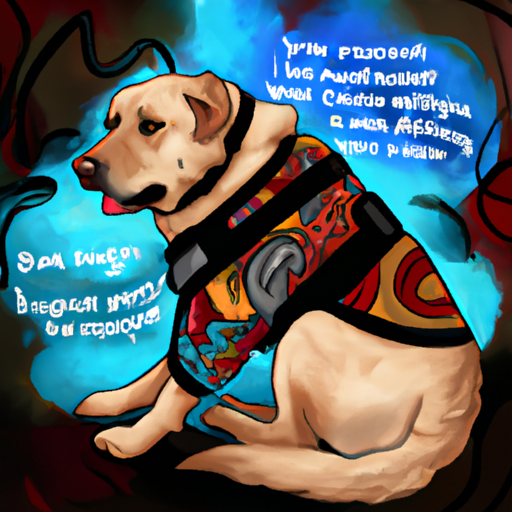Introduction
You’re doing your best to care for a loved one with Post-Traumatic Stress Disorder (PTSD), and you’ve likely heard about service dogs as a potential tool to help manage this condition. You’re curious and maybe a bit skeptical about what these animals can actually do. After all, it’s not just about having a furry friend around, it’s about ensuring the best possible care for your loved one.
The Role of Service Dogs in PTSD Management
Service dogs are trained to perform specific tasks that can help manage symptoms of PTSD. They are not just pets; they are working animals that provide a valuable service.
Here are some of the key roles a service dog can fulfill:
-
Interrupting nightmares and night terrors: One of the most distressing symptoms of PTSD can be vivid, terrifying dreams that disrupt sleep. Service dogs are trained to wake their handler if they start showing signs of distress during sleep.
-
Grounding during panic attacks: During a panic attack, a service dog can provide pressure therapy or ‘grounding’, helping a person to focus on the physical presence of the dog rather than their symptoms.
-
Mitigating hypervigilance: PTSD can make people overly alert or wary, which can be exhausting. Service dogs can help by doing a sweep of the house, reassuring their handler that there’s no danger.
-
Providing a social buffer: Social interactions can be challenging for those with PTSD. A service dog can act as a buffer in social situations, helping their handler feel safer and more comfortable.
-
Helping to interrupt harmful behaviors: If a person with PTSD starts to engage in self-harming behavior, a service dog can be trained to interrupt this behavior.
Training and Certification of PTSD Service Dogs
Training a service dog for PTSD is a complex process that requires a high level of expertise. The exact training program can vary depending on the needs of the individual, but it generally involves the following steps:
- Basic obedience training
- Socialization
- Task-specific training
- Public access training
| Training Phase | Length of Time | Description |
|---|---|---|
| Basic obedience | 3-6 months | Teaching the dog to follow basic commands |
| Socialization | Ongoing | Exposing the dog to various environments and people |
| Task-specific training | 6-12 months | Teaching the dog to perform specific tasks related to PTSD |
| Public access training | 3-6 months | Training the dog to behave appropriately in public places |
How to Acquire a PTSD Service Dog
Acquiring a service dog may seem daunting, but there are organizations that can guide you through the process. Here are the general steps:
- Connect with a reputable service dog organization.
- Apply for a service dog through the organization.
- Participate in an interview or evaluation process.
- Wait for a suitable dog to be trained.
- Complete a training program with the dog.
- Take the dog home and start your journey together.
Frequently Asked Questions
Q: How long does it take to train a service dog for PTSD?
A: Training a service dog for PTSD can take between 18 and 24 months.
Q: Can any dog become a service dog for PTSD?
A: Not all dogs are suited to be service dogs. They need to have a certain temperament and physical capabilities.
Q: How much does a PTSD service dog cost?
A: The cost can vary widely, but it can be several thousand dollars. Some organizations provide service dogs for free or at a reduced cost to those who qualify.
Q: Can a service dog go anywhere with their handler?
A: Yes, under the Americans with Disabilities Act, service dogs are allowed to accompany their handler in all areas where the public is normally allowed to go.
You’re doing an amazing job as a caregiver. If a service dog seems like it could be beneficial for your loved one, don’t hesitate to explore this option. Remember, you’re not alone, and there are resources available to help you and your loved one on this journey.



